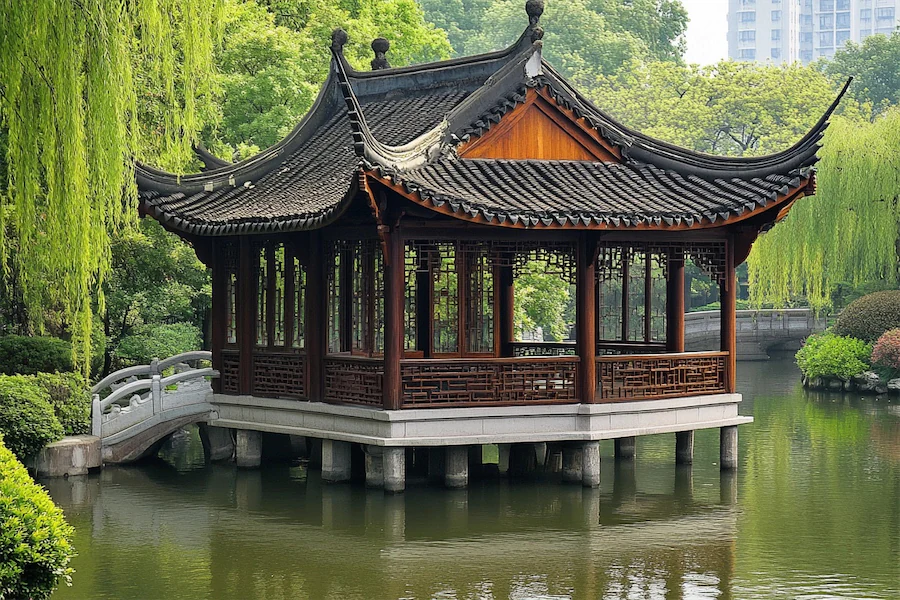Chinese pavilions, known as ting (亭), are integral elements of traditional Chinese architecture, often found in gardens, temples, and scenic areas. Their roofs are particularly notable for their intricate designs and symbolic meanings.
History and Origins of Chinese Pavilion Roofs
The concept of the pavilion dates back to the Zhou dynasty (1046–256 BCE), serving various functions from military watchtowers to rest stops along roads. Over time, they evolved into ornamental structures symbolizing status and offering spaces for reflection and appreciation of nature.
Key Features of Chinese Pavilion Roofs
Chinese pavilion roofs exhibit several distinctive features:
- Roof Shapes: Common designs include round, square, triangular, and octagonal roofs. Each shape serves both aesthetic and symbolic purposes, often reflecting harmony with the surrounding environment.
- Eaves and Overhangs: The eaves often curve upwards, a design that not only adds elegance but also facilitates water runoff and provides shade. This curvature is symbolic, representing openness and the lifting of one’s spirit.
- Decorative Elements: Roofs are adorned with intricate carvings, colorful tiles, and sometimes figures of animals or mythical creatures, each carrying specific cultural meanings. For instance, the use of certain animals can signify protection or good fortune.
Applications of Chinese Pavilion Roofs
Pavilion roofs are designed to harmonize with their natural surroundings, providing shelter and enhancing the aesthetic appeal of gardens and landscapes. They serve as spaces for rest, contemplation, and social gatherings, embodying the Chinese philosophy of unity between humanity and nature.
Considerations When Choosing Chinese Pavilion Roofs
When selecting or restoring a Chinese pavilion roof, consider the following:
- Material Selection: Traditional materials like wood and glazed tiles are preferred for authenticity, though modern materials may be used for durability.
- Structural Integrity: Ensure that the roof design is compatible with local climate conditions, particularly regarding load-bearing capacities and resistance to elements like wind and rain.
- Cultural Significance: Incorporate traditional design elements that reflect the intended symbolic meanings and historical context of the pavilion.
Conclusion
The roofs of Chinese pavilions are more than architectural features; they are expressions of cultural values, aesthetics, and philosophical ideals. Their designs continue to inspire and captivate, representing a timeless connection between architecture and the natural world.
